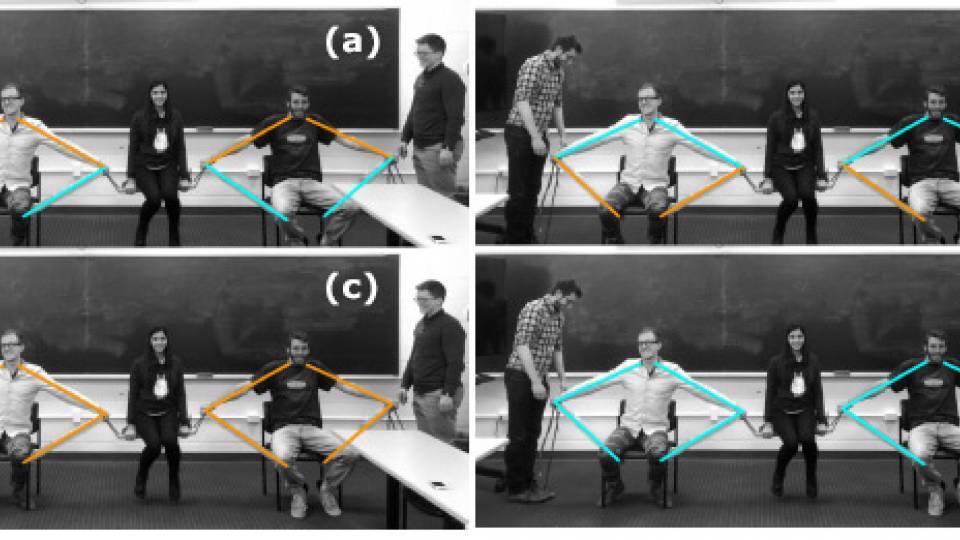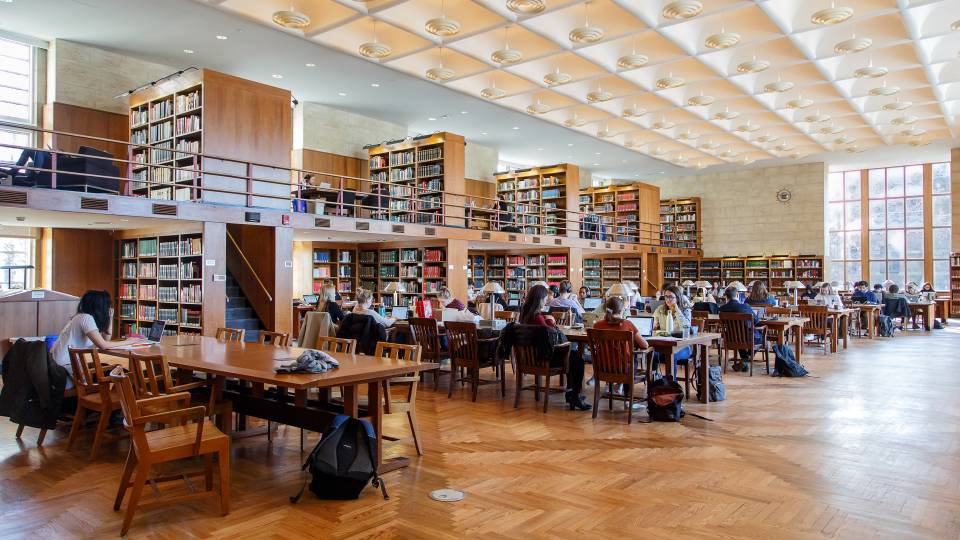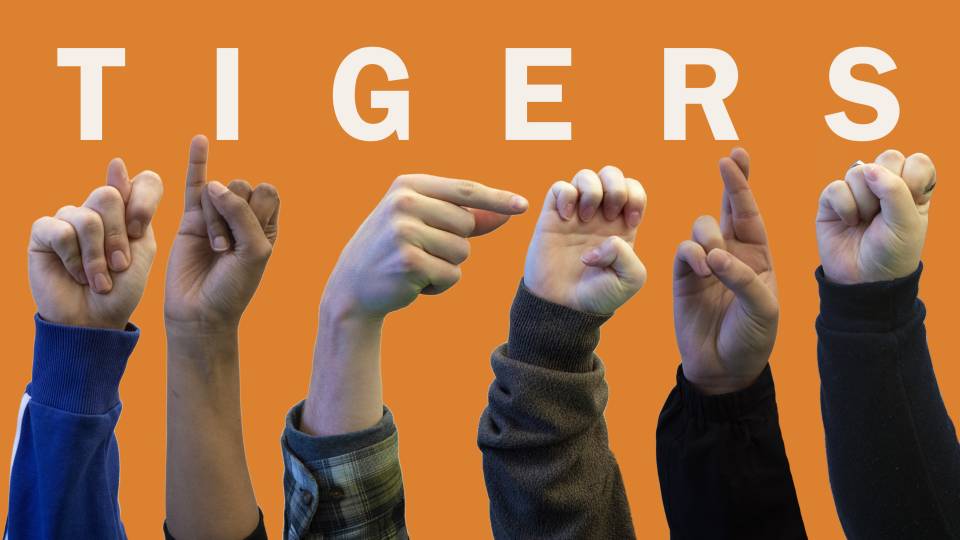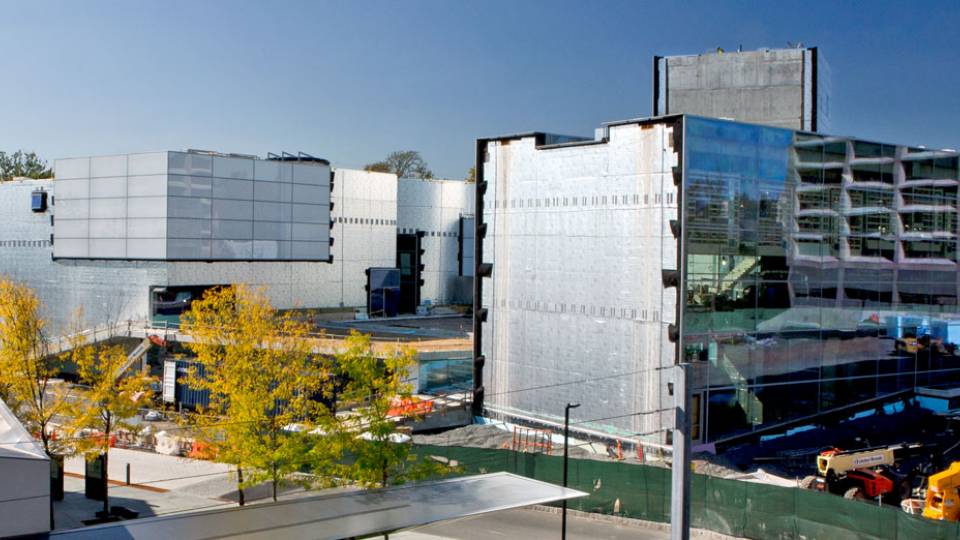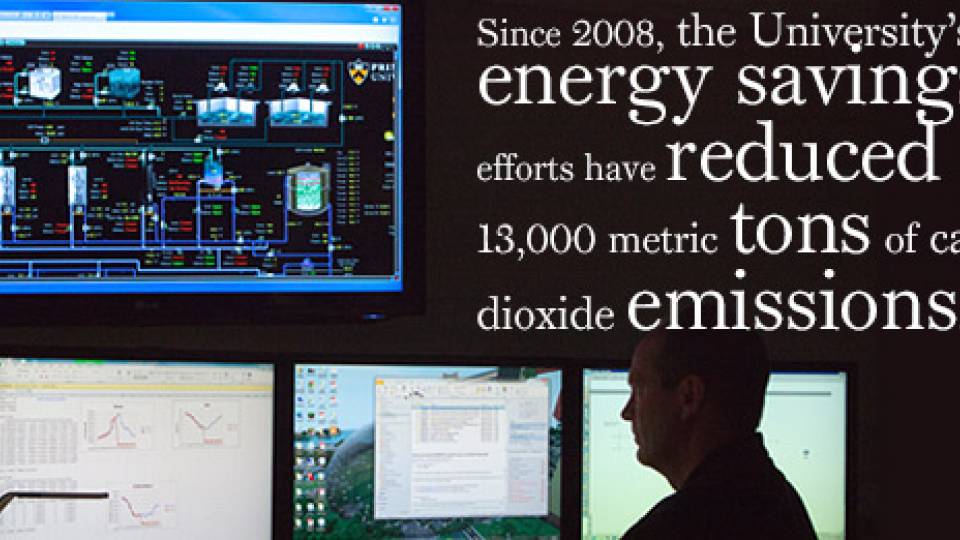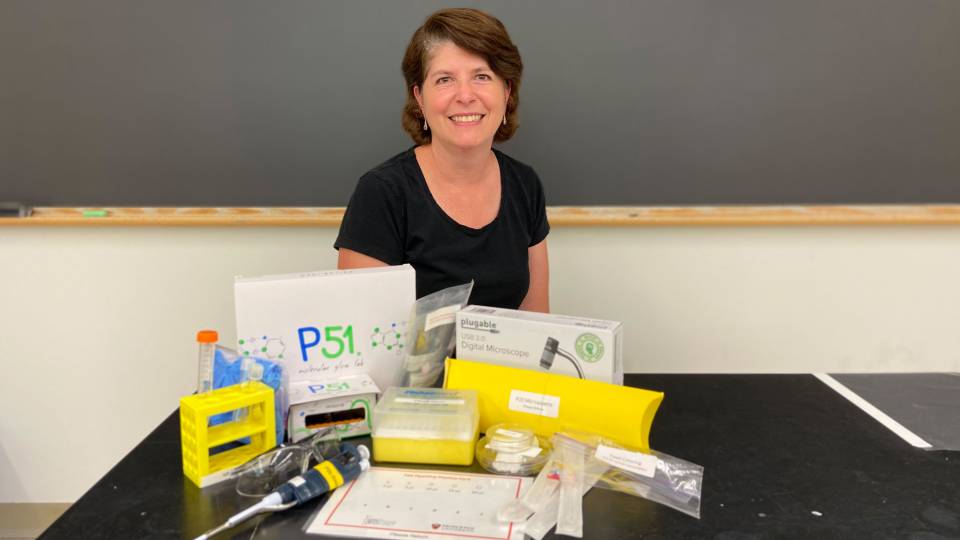Princeton University classrooms, and the technology inside them, are getting a makeover.
Nearly 240 classrooms scheduled by the Registrar will be improved over the next five years as part of a Learning Spaces Initiative. The project will upgrade and standardize audiovisual technology as well as refresh furniture, lighting, acoustics and other features inside learning spaces.
Work will mostly occur during summer breaks, with 40 to 50 rooms updated each year. The initiative is coordinated by the Office of Capital Projects (OCP) in Facilities and the Instructional Support Services group in the Office of Information Technology (OIT), in close collaboration with the Registrar’s Office and Faculty Committee on Classrooms and Schedule.
“This is a holistic and deliberate plan to upgrade classrooms to reflect how faculty teach and how students learn today,” said Paul LaMarche, vice provost for space programming and planning.
He added: “This gives us a chance to bring in new technology and new teaching spaces that weren’t available to us before. It is a huge investment and commitment that we hope will be transformational to the classroom experience.”
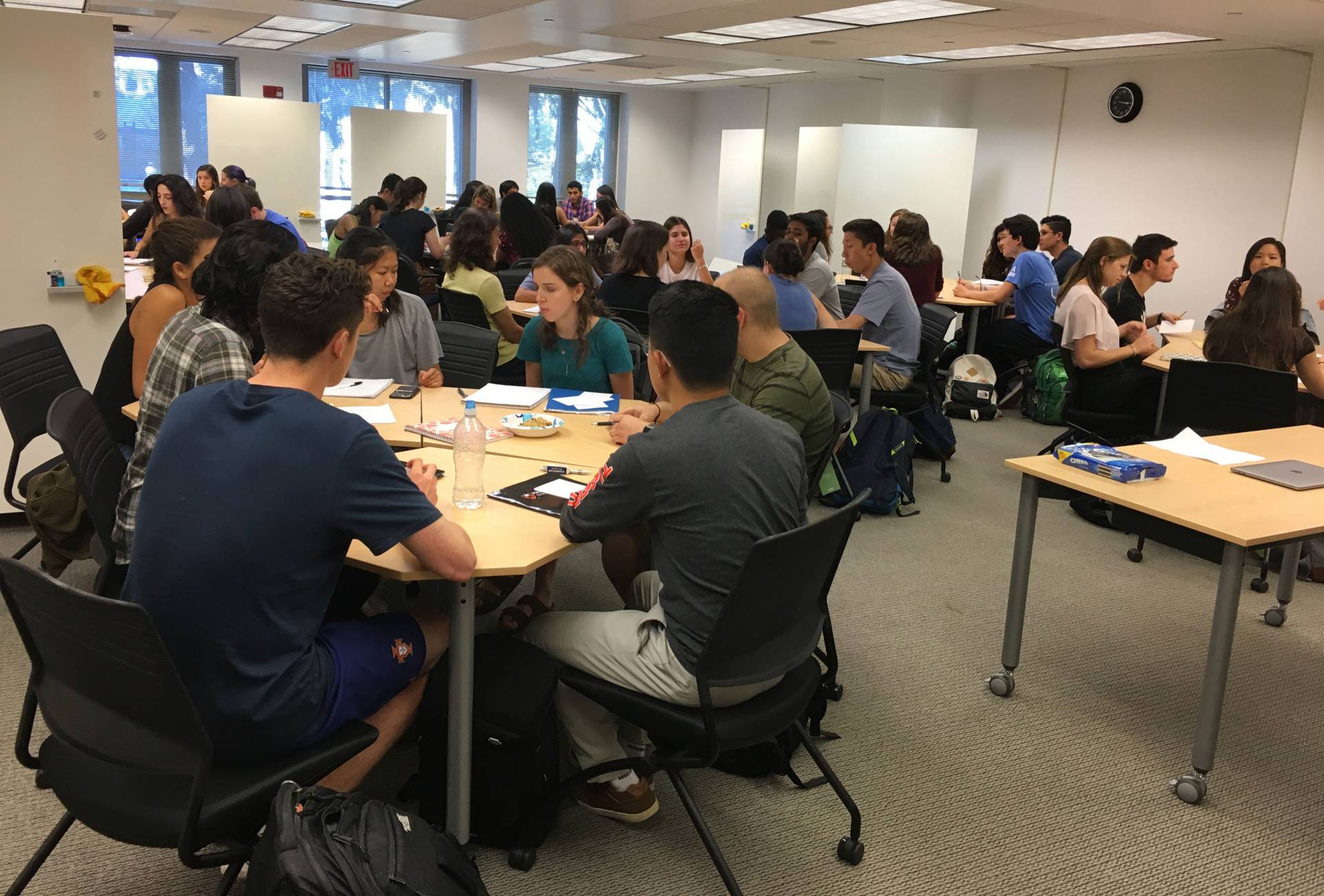
The classroom Green Hall, 1C 4C, has been renovated as an active learning classroom. The space features movable desks and white boards to encourage student collaboration, hands-on activities and group discussion. A new Learning Spaces Initiative will improve classrooms across campus over the next five years to standardize audiovisual technology, as well as refresh furniture, lighting, acoustics and other features. The goal is to improve educational technologies and make learning spaces more user-friendly and flexible.
University Registrar Polly Griffin said the goal is to improve educational technologies and make learning spaces more user-friendly and visually appealing.
“The quality of spaces for both learning and teaching are critical, so the renovations will focus on both the faculty experience and the student experience,” she said.
A working group, which is a subset of the Faculty Committee on Classrooms and Schedule, helped develop the Learning Spaces Initiative. The group will continue to solicit feedback from faculty, students and staff throughout the five-year classroom upgrade plan.
Uniform and user-friendly educational technology
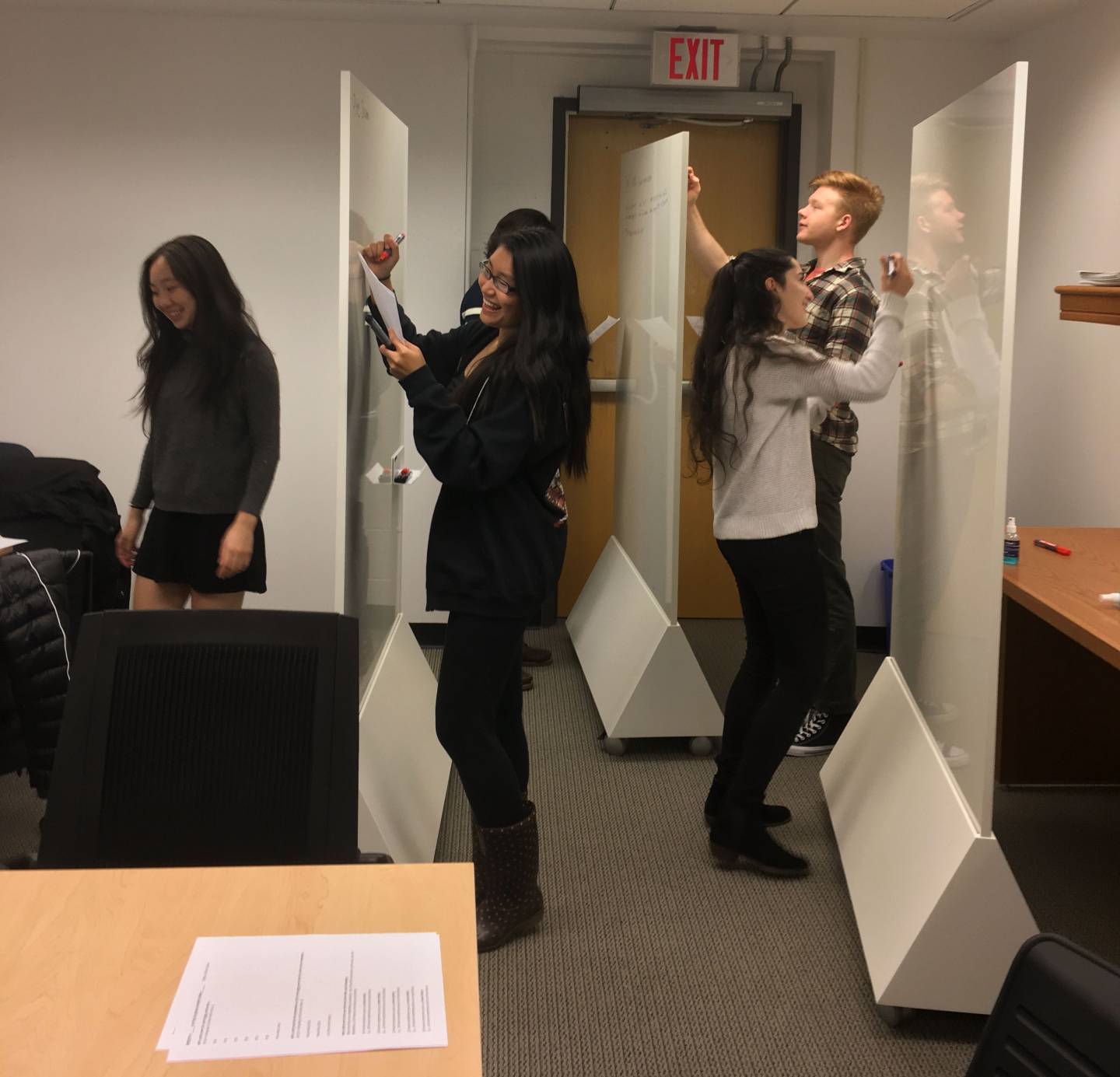
Students in last fall’s class “Linguistic Universals and Language Diversity” write on the mobile white boards in Green Hall’s active classroom. Laura Kalin, assistant professor of linguistics, said the room’s versatility allows students to work together in small groups to process information and think beyond the course material.
Uniform audiovisual equipment will offer a more consistent experience for faculty and students, improving teaching and learning, Griffin said. The audiovisual upgrades also will improve accessibility for students with visual and hearing impairments.
“We know from many faculty discussions that having different technology systems from one classroom to the next is frustrating,” she said. “The move from analog to digital technology is the baseline change to be made in learning spaces across campus.”
Standard classroom technologies will include: Apple TV for wireless presentations; new projectors and flat panel televisions for large displays; standard HDMI connections to plug laptops into high-definition screens for faculty and student presentations; and intuitive control panels that make it easier to use classroom technologies.
Richard Bakken, director of Instructional Support Services, said OIT is proud to work with campus partners to deliver a new and enhanced technology experience in University learning spaces.
As buildings have been constructed or renovated, varied technology has been installed in learning spaces, he said.
“As equipment has evolved and become obsolete, there has been no plan in place to address the upkeep of and need to refresh existing equipment, thereby making many classroom systems confusing and difficult to use,” Bakken said. “The Learning Spaces Initiative outlines a regular refresh and upgrade cycle for classroom technologies. This is a first for Princeton and a game-changer for our faculty and students to enhance teaching and learning.”
He added that long-term maintenance of classroom technology also is planned after the initial five-year upgrade cycle.
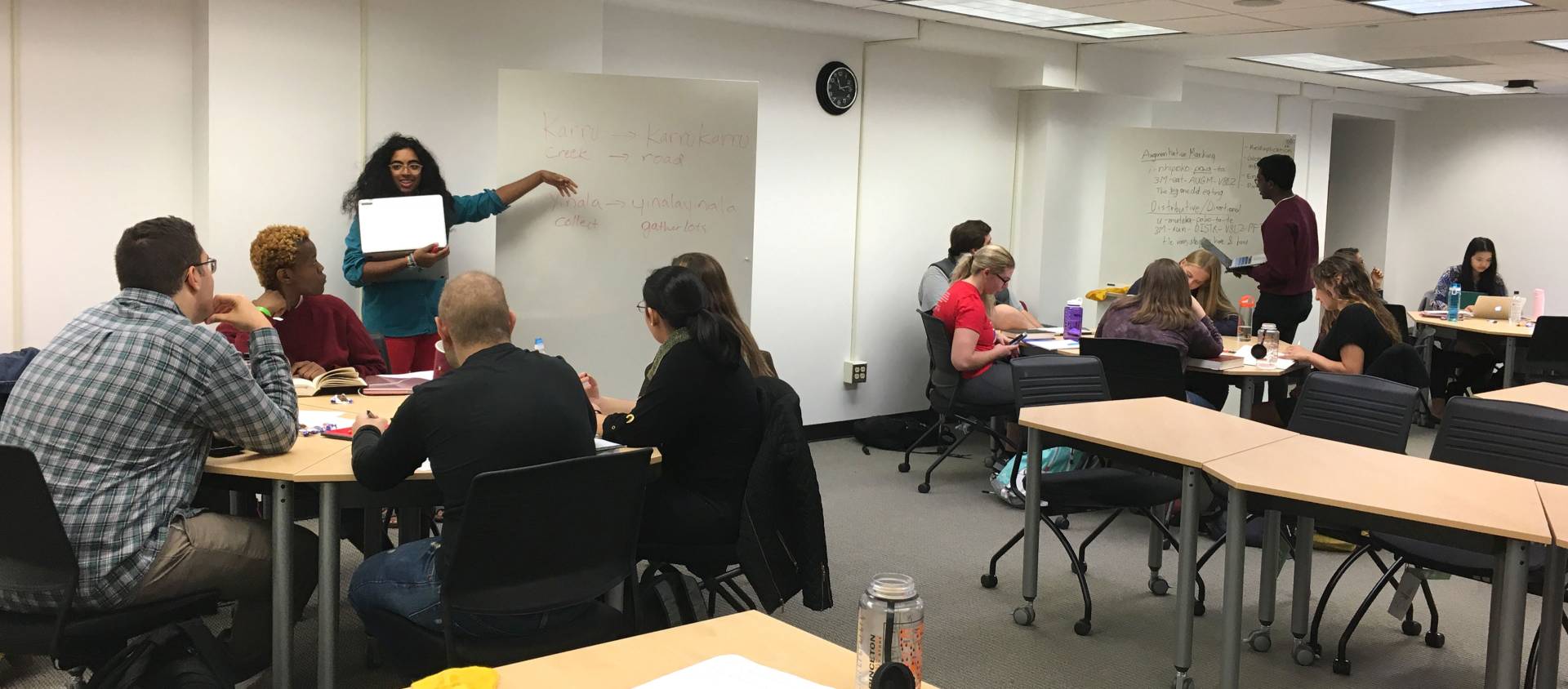
Active learning spaces, such as the room in Green Hall, typically feature user-friendly technology, flexible designs to support multiple uses, and movable furniture to foster interaction and collaboration. The Learning Spaces Initiative will renovate classrooms based on teaching and learning needs. For example, a room used for language classes may be configured differently than learning spaces used for introductory science courses.
Classrooms that foster teaching and learning
While technology will be standardized, room renovations will vary depending on pedagogical needs.
“When it comes to furnishing, lighting, acoustics and design, we will tailor that based on the teaching and learning experience that happens inside the room,” LaMarche said. “A language class may be configured differently than an introductory chemistry lecture.”
Renovations also will improve classrooms that serve multiple purposes, such as McCosh Hall’s rooms 10 and 50.
“Recognizing that those spaces are also used for public lectures, upgrades will include improving the acoustics and sound quality in the room,” LaMarche said. He added that architecture consultants will help the University upgrade older classrooms in a way that also maintains their historic character.
The initiative also will create more active learning spaces, which typically include user-friendly technology, flexible designs to support multiple uses and disciplines, and movable furniture to foster faculty-student interaction and student collaboration.
“Active learning classrooms provide faculty and students with spaces that enhance the exchange and creation of knowledge,” said Rebecca Graves-Bayazitoglu, director of the McGraw Center for Teaching and Learning.
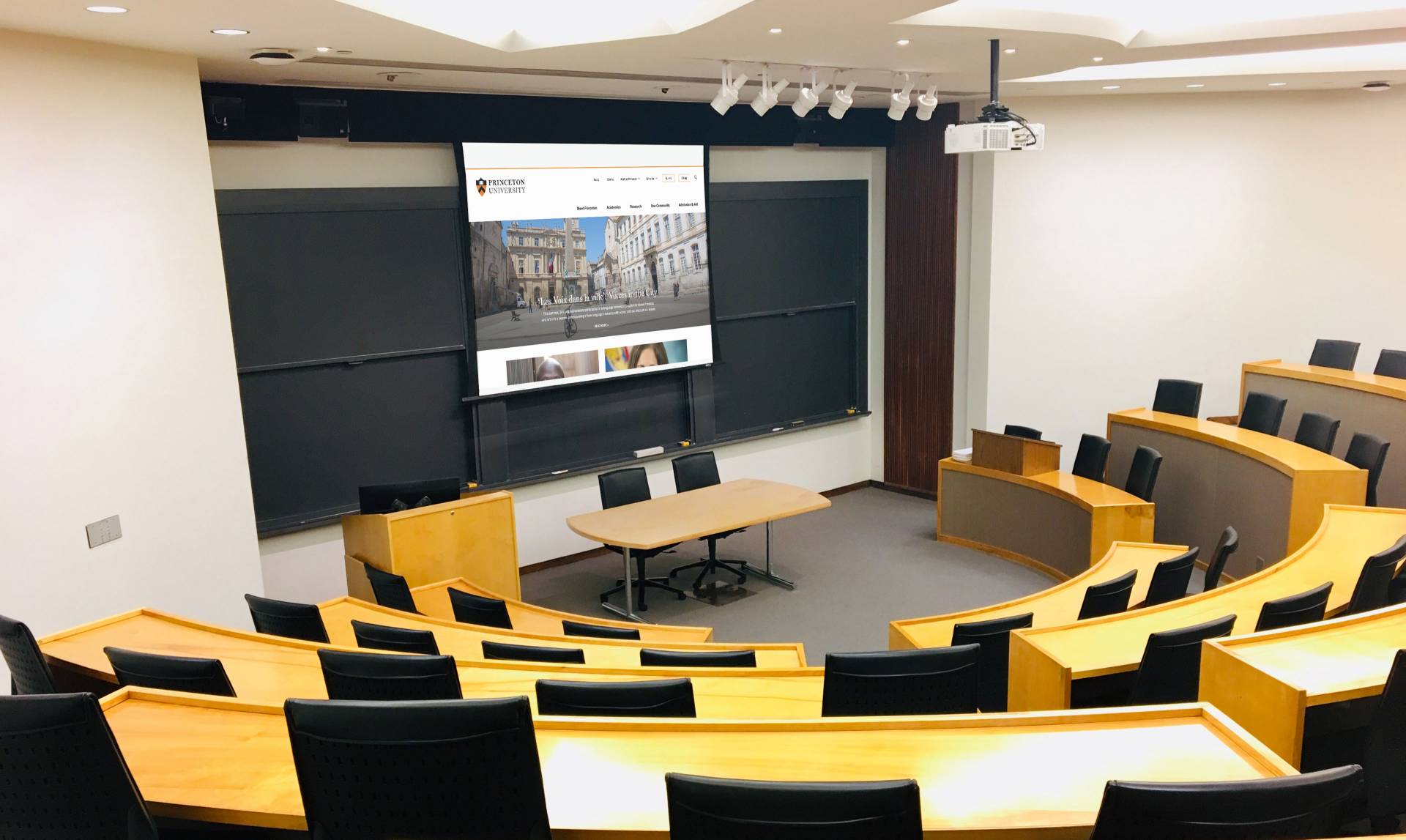
Audiovisual technology in learning spaces will be upgraded and standardized over the five-year project. Examples include: Apple TV for wireless presentations; new projectors and flat panel televisions for large displays; standard HDMI connections; and intuitive control panels. Robertson Hall, Bowl 2, has already been updated to include a new projection system with more streamlined controls.
The University has already upgraded spaces in Green Hall, Frist Campus Center and Friend Center to promote active learning. Laura Kalin, assistant professor of linguistics, has taught in what’s known as the active learning classroom in Green Hall.
“I absolutely love the layout and the versatility — the active learning setup has completely transformed how I'm able to teach my classes,” Kalin said. “There is no way that I could have accomplished my course goals without an active classroom.”
Kalin’s students were able to reconfigure the desks and use the mobile white boards for group discussions and exercises.
“The geometric tables are so easy to manipulate into different configurations depending on our needs, where in a regular classroom you're basically stuck with one configuration,” she said. “The small group discussions allowed students to process and think beyond the course material. Some students told me how awesome the active classroom is, and how meaningful it is to have a class where they engage hands-on with the material and work so closely with each other.”
Nancy Lape, the William R. Kenan, Jr. Visiting Professor for Distinguished Teaching, evaluated many rooms before requesting the Green Hall space for her course “Separations in Chemical Engineering and Biotechnology.” Lape is a professor of engineering at Harvey Mudd College and a visiting professor of chemical and biological engineering at Princeton this year.
“At Harvey Mudd College, we built a new teaching building a few years ago that almost exclusively contains rooms with moveable tables and chairs,” Lape said. “I use lots of group work. Students can work together in different-sized teams, even moving into different configurations during a class. I base my teaching methods on STEM education research and proven best practices, and I absolutely would not be able to teach the way that I do without an active learning space.”
